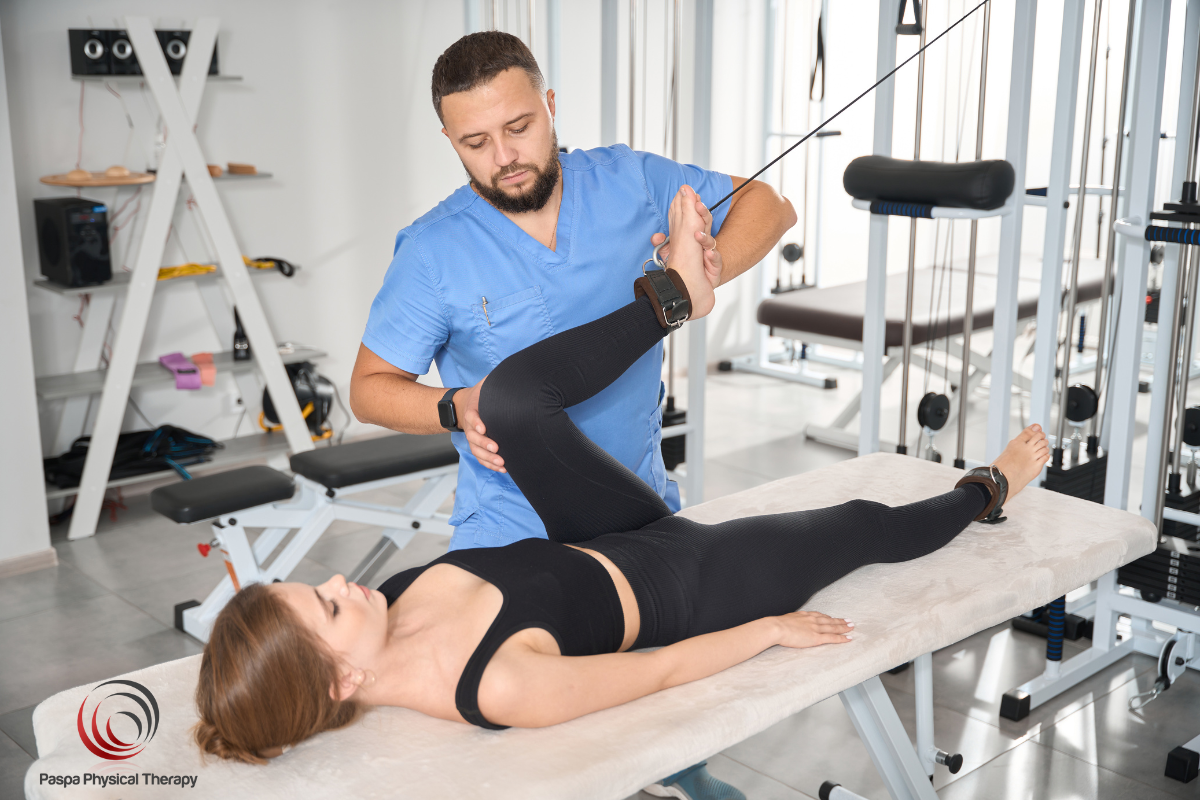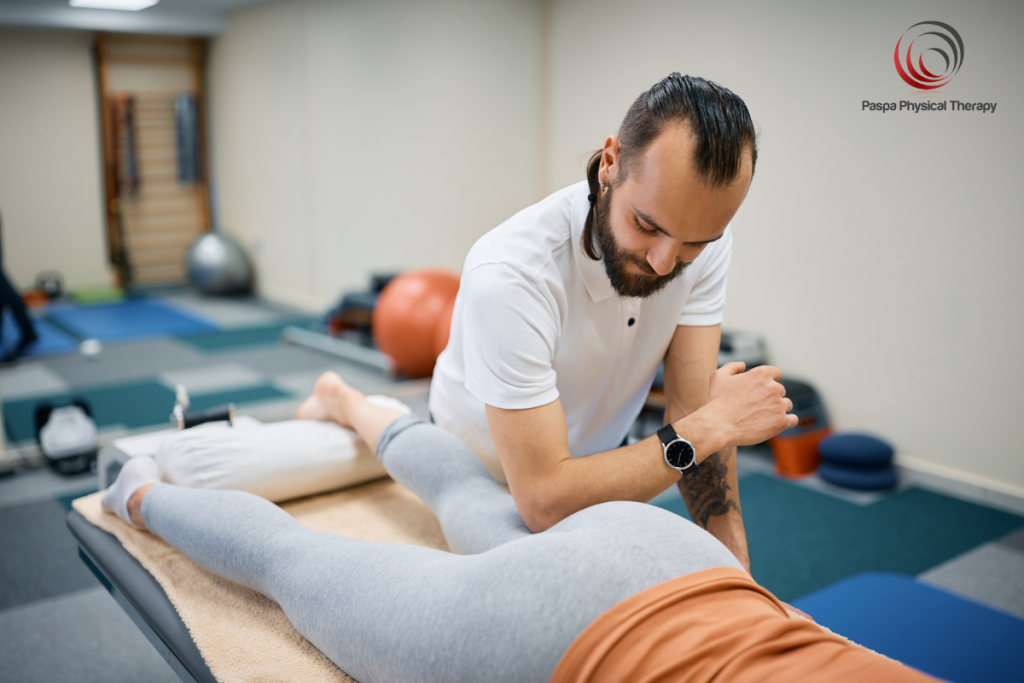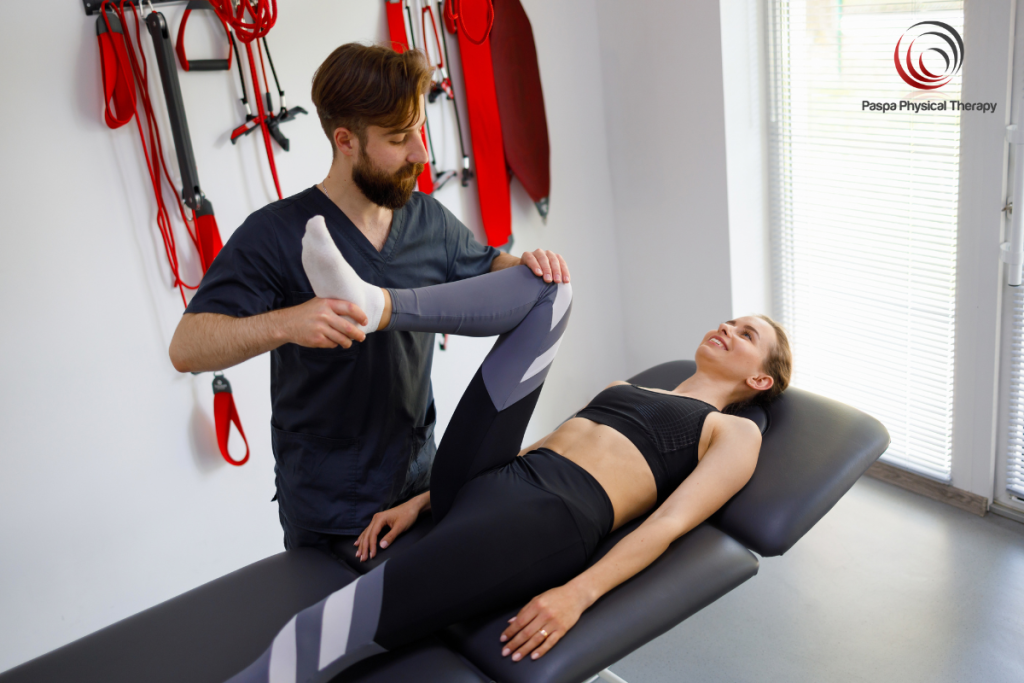Hamstring Strain

If you’ve ever felt a sudden pain in the back of the thigh while sprinting, jumping, or even bending down quickly, there’s a good chance it was a hamstring injury. In this article, we’ll explore what hamstring injuries are, what causes them, the symptoms to watch out for, and how they are diagnosed and treated.
If you’re dealing with a pulled hamstring or recovering from severe hamstring injuries, Paspa Physical Therapy in Manhattan, NY, offers expert one-on-one care. Our seasoned physical therapists treat patients in private rooms with full access to a gym for comprehensive rehab. Call us today to schedule your personalized evaluation.
What is a Hamstring Injury?
The hamstring is not a single muscle but a group of three muscles at the back of the thigh. It includes the biceps femoris, semitendinosus, and semimembranosus. These muscles stretch from the pelvis (specifically the ischial tuberosity) down to the knee, helping you bend the leg and extend your legs backward from the hip.
A hamstring strain happens when one or more of these muscles or tendons become overstretched or torn. Strains vary in severity, from mild overstretching to a complete tear, often referred to as a grade 3 injury. While some cases heal with rest and basic care, severe hamstring injuries may require surgery and prolonged physical therapy.
Pulled Hamstring Symptoms
A pulled hamstring typically causes sudden pain during physical activity. Common symptoms include:
- Sharp pain in the back of the thigh
- Swelling, bruising, or visible deformity
- Difficulty straightening the leg
- Severe pain when walking or putting pressure on the injured limb
- Muscle weakness or tenderness
In more serious cases, you might feel a “pop” followed by additional swelling or inability to continue your usual activities. A partial tear may allow some movement but can still be painful and limit function.
Hamstring Injury Causes
Hamstring muscle injuries often occur due to overstretching or overloading, especially during sports that involve sprinting, kicking, or sudden changes in direction. Risk factors include:
- Tight muscles or poor flexibility
- Muscle imbalances, particularly with the quadriceps
- Inadequate warm-up
- Previous injury
- Fatigue or poor conditioning
- Older athletes and adolescent athletes may be more prone due to muscle development stages
Sometimes, other muscles try to compensate, increasing the risk of hamstring injuries.
How Doctors Diagnose Hamstring Injuries
Healthcare providers start with a detailed physical exam and patient history. To determine the severity, they may order imaging tests like magnetic resonance imaging (MRI) or ultrasound to confirm a tear and assess swelling and muscle damage.
Doctors will also evaluate your ability to walk, extend your leg, and whether you can bear weight. For more serious injuries, an accurate diagnosis is key to avoiding permanent damage.

What Are Pulled Hamstring Surgical Treatments?
In rare cases, particularly with a complete tear or tendon avulsion near the ischial tuberosity, surgery may be necessary. This is more common in grade 3 injuries or when the tendons pull away from the bone.
Surgical treatment involves reattaching the torn muscle or tendon and usually requires a structured recovery plan, including physical therapy, to heal properly and resume training safely.

Non-Surgical Treatment (Physical Therapy)
stands for Rest, Ice, Compression, and Elevation. This will help reduce swelling and prevent additional swelling. Cold packs, an elastic compression bandage, and avoiding weight-bearing can help during the acute phase.
Long-term recovery often includes the following:
- Gentle stretching and strengthening exercises
- Manual therapy to reduce scar tissue
- Functional rehab focused on return to sport or usual activities
At Paspa Physical Therapy, we specialize in treating hamstring muscle injuries with a tailored approach. We never delegate to aides or trainers. Your physical therapist will work with you one-on-one in a private treatment room. With access to a full gym, your rehab plan will include exercises that simulate your normal physical activity to get you back faster and stronger.
Get Expert Help at Paspa Physical Therapy
Whether you’re an elite athlete or simply enjoy staying active, a hamstring strain can disrupt your life. With the right diagnosis, expert care, and a personalized recovery plan, most hamstring injuries can heal fully.
At Paspa Physical Therapy in Manhattan, we help patients recover from hamstring muscle injuries with personalized care and decades of experience. Don’t let pain sideline you. Call us today to start your recovery and get back to doing what you love with less pain, better strength, and more confidence.
Our Services
Condition and Injuries We Treat
